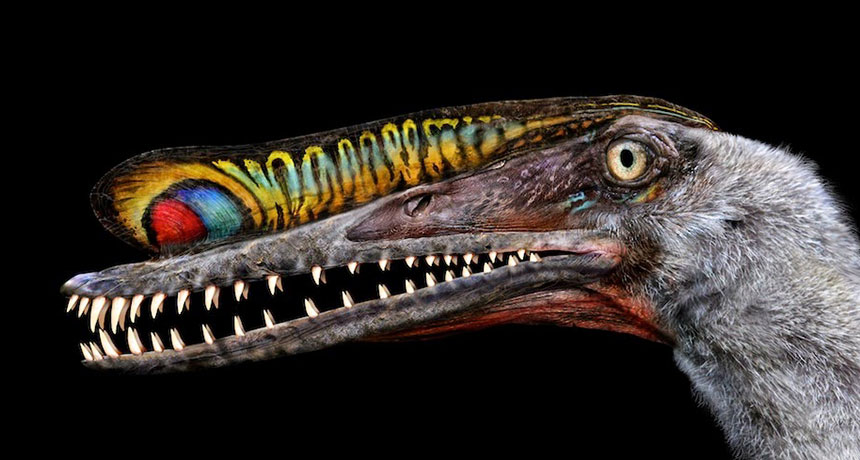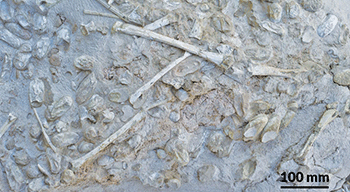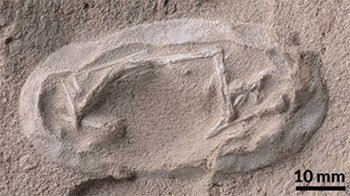Jackpot! Hundreds of fossilized pterosaur eggs unearthed in China
Preserved embryos give insights into the early development of these flying reptiles

An artist’s illustration of what scientists think the head of Hamipterus tianshanensis would have looked like. This ancient flying reptile lived during the Cretaceous Period.
CHUANG ZHAO
Share this:
- Share via email (Opens in new window) Email
- Click to share on Facebook (Opens in new window) Facebook
- Click to share on X (Opens in new window) X
- Click to share on Pinterest (Opens in new window) Pinterest
- Click to share on Reddit (Opens in new window) Reddit
- Share to Google Classroom (Opens in new window) Google Classroom
- Click to print (Opens in new window) Print
Hundreds of newfound pterosaur eggs are giving scientists a peek into how the ancient fliers developed. These winged reptiles were not dinosaurs, but they lived alongside dinos. Some of the newly discovered eggs still contained the bones of tiny embryos. After studying those bones, researchers now think that the hatchlings might have been able to walk, although not yet fly.
A team of scientists uncovered at least 215 eggs. They came from a block of sandstone about 3 meters (10 feet) square. All of the eggs belonged to one species: Hamipterus tianshanensis. It lived in the early Cretaceous Period, some 120 million years ago, in what is now northwestern China. Xiaolin Wang of the Chinese Academy of Sciences in Beijing led the research team. As a vertebrate paleontologist, he studies the fossils of animals with backbones.
The eggs were a rare find. Researchers had found only a handful of pterosaur eggs before. Five came from the same site in China. Scientists unearthed two others in Argentina. And only one of these seven contained an embryo. Although flattened, it was rather well-preserved. Still, that early lone embryo gave scientists very little to work with as they initially tried to piece together details about the earliest stages of pterosaur (TAIR-oh-soar) development.
Unlike the hard-shelled eggs of dinosaurs, birds and crocodiles, the newfound eggs were soft. They had a thin outer shell, similar to those of modern-day lizards. This fragile shell also may explain why few fossils had survived.

Alexander Kellner is a vertebrate paleontologist. He works at Museu Nacional/Universidade Federal do Rio de Janeiro in Brazil. The new eggs did not come from a nesting site, he says. Instead, the eggs were jumbled and deformed. This suggests a flood likely washed them from their nests during an intense storm, Kellner says. Sand and other sediments in the water must have quickly buried them. “Otherwise,” he concludes, “they would have decomposed.”
The researchers scanned the eggs using computerized tomography, or CT. This specialized type of X-ray imaging helped see inside the eggs. Being soft, most of the pterosaur eggs had flattened during burial and fossilization. But the block contained at least 16 partial embryos. And some of them were captured in 3-D.
Two of the best-preserved embryos revealed a tantalizing clue to pterosaur development, Kellner says. His team looked at a key part of a wing bone, called the deltopectoral (Del-toh-PEK-toh-rul) crest. Even in an embryo that the researchers think had been nearly ready to hatch, this bone had not been fully developed. But the embryo’s femur, or leg bone, was.

These features suggest that hatchlings could walk, the scientists say, but not yet fly. If so, the young creatures may have needed parental care for feeding, the researchers noted in their paper. It appeared December 1 in Science.
D. Charles Deeming is a vertebrate paleontologist at the University of Lincoln in England. He was not involved in the new study, although he wrote about it for the same journal. The walk-not-fly idea is interesting but no more than an educated hunch, he argues. There are not enough details to speculate about pterosaur behavior, he cautions. For example, he charges, no one can say for certain that the embryo in question was close to hatching. So it’s too early to say that it couldn’t fly at hatching. But as there were so many eggs, he says researchers certainly can get a better idea of the range of the animals’ sizes.
Kellner agrees that there are still many things his team does not know from the fossil eggs. That’s why his group is continuing to study them along with other eggs found more recently at the same site. And the hunt is on for still more.
“Now that we know what they look like, we can go back and find more,” he says. “You just have to get your knees down and look.”







